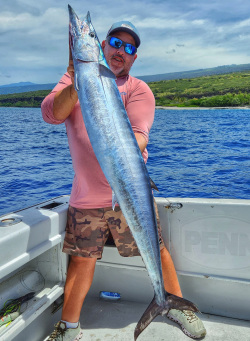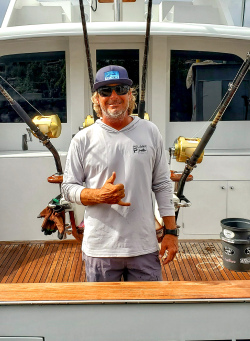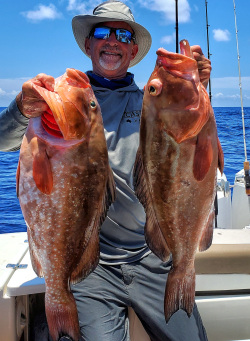Fisherman should know how to fillet mangrove snapper, a top inshore fish. Different filleting techniques are necessary for different fish. Grovers are the tastiest fish to eat, and a good knife and steady hand are essential. Captain William Toney of Homosassa Inshore Fishing can guide you through the process, ensuring you eat the best and leave feeling great.
Mangrove Snapper - Filleting Fish with William Toney
(00:02:42)- Mangrove Snapper is a delicious inshore fish prized for its sweet, subtle flavor
- Captain William Toney demonstrates a simple technique for filleting Mangrove Snapper
- Having a sharp, high-quality knife is key for properly filleting fish
- Toney's method results in quick, boneless fillets that maximize the amount of meat
When it comes to inshore fishing in Florida, few species are as prized for their delicious flavor as Mangrove Snapper, also known as Gray Snapper. These tasty fish have a subtle sweetness that makes them a favorite among anglers and seafood lovers alike. But once you've caught a mess of Mangrove Snapper, knowing how to properly fillet them is crucial for enjoying their top-notch table fare.
How to Fillet Mangrove Snapper
Enter Captain William Toney, a renowned inshore fishing guide and expert in all things Florida fishing. In his video "Mangrove Snapper - Filleting Fish with William Toney," he demonstrates a simple, effective technique for filleting these delectable fish.
The Importance of a Sharp Knife
Before diving into the filleting process, Toney emphasizes the importance of having a high-quality, sharp knife. A dull blade not only makes the job more difficult but can also result in a less-than-optimal yield of meat from each fish.
"Your blade makes all the difference," Toney explains as he demonstrates how to use a wet stone to sharpen the edge of his knife.
Toney's Filleting Technique
- Make an initial cut behind the gills and pectoral fin
- Slice along the backbone, separating the fillet from the ribcage
- Remove the skin from the fillet
- Trim away any remaining bones or unwanted bits
By following these steps, anglers can transform their hard-earned catch into delectable, ready-to-cook fillets in just a matter of minutes.
Maximizing Your Catch
One of the key benefits of Toney's filleting method is that it allows anglers to make the most of each Mangrove Snapper they catch. By carefully removing the fillets and leaving behind as little meat as possible on the bones, fishermen can enjoy a greater yield from their efforts on the water.
Putting Your Fillets to Good Use
- Grilled Mangrove Snapper with Lemon-Herb Butter
- Blackened Mangrove Snapper Tacos
- Pan-Seared Mangrove Snapper with Mango Salsa
- Mangrove Snapper Ceviche with Avocado and Cilantro
No matter how you choose to prepare them, properly filleted Mangrove Snapper are sure to impress even the most discerning seafood enthusiasts.
What is the best way to catch Mangrove Snapper?
Mangrove Snapper can be caught using a variety of methods, including live bait fishing, jigging, and chumming. Some popular baits include live shrimp, small baitfish, and cut bait.
How can I ensure my Mangrove Snapper fillets are boneless?
Following Captain William Toney's filleting technique and using a sharp knife can help minimize the presence of bones in your fillets. Additionally, you can use your fingers to feel for any remaining bones and carefully remove them with tweezers.
What is the best way to store Mangrove Snapper fillets?
If you plan to eat your Mangrove Snapper fillets within a day or two, store them in the refrigerator in an airtight container. For longer storage, wrap the fillets tightly in plastic wrap or vacuum seal them, then place them in the freezer for up to several months.
Be A Smarter Fisherman
By mastering the art of filleting Mangrove Snapper and following the expert advice of Captain William Toney, anglers can ensure they make the most of every catch and enjoy the unparalleled flavor of this prized inshore species.
User Reviews
There are no reviews yet.Captain William Toney
Captain William Toney, a Florida native, is a fourth-generation fishing guide known for his expertise in Redfish, Sea Trout, Mangrove Snapper, Snook and other fish species. He is a licensed and insured guide, a Homosassa Guide's Association member, and hosts 'In The Spread', an online fishing instruction platform. Toney's expertise in redfish, tides, and bait presentation is unparalleled, and he shares his knowledge on seasonal fish migration patterns and tidal flows. His dedication to passing on his knowledge to younger generations is invaluable.
Read more



